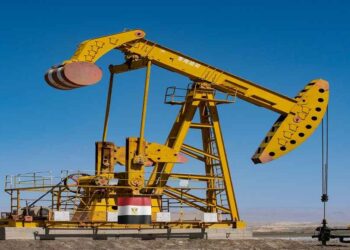The Society of Petroleum Engineers (SPE) Annual Technical and Conference (ATCE) is taking place this week while the oil and gas industry is in the midst of a perfect storm of low oil prices, brought on by an oversupply and weak global demand. There is uncertainty about the present, but the conference attendees appear to be cautiously optimistic about a bright future of the industry.
“We’re in the midst of a journey that is like the Lewis & Clark expedition, which opened up the Western frontier of the United States,†said 2015 SPE President Helge Hove Haldorsen. “Shaping the future will require the same level of resilience and innovation.â€
Highlight of the opening general session was a panel session titled, “2040: The Journey and a Destination – Diverse Perspectives.†The discussion was moderated by Eithne Treanor, Managing Director, E Treanor Media. The diverse set of participants were Jorge Leis, oil and gas consultant, Bain & Company; Bernard Looney, CEO Production, BP; Jarand Rystad, Managing Partner, Rystad Energy; Scott Tinker, Director of the Bureau of Economic Geology and state geologist of Texas; and Adil Zulkfli, Senior Vice President, Petronas.
The panel expressed concern about the crude oil oversupply and its short-term impact on oil gas budgets and industry employment, but was generally enthusiastic about the reversal of the down cycle and the result of a supply gap, long before 2040.
“The industry is in a state of supply shock,†explained Leis. “The unexpected increase of tight oil from the United States was exacerbated by increase in production from the lowest cost suppliers.â€
“The people in this audience were too smart and too clever,†added Rystad.
The panelists were in agreement that increase in global demand would not be a source of salvation for the industry. “Hope is not a strategy,†admitted Looney. “We have to manage what we can manage through a focus on activities, simplifying processes and reducing costs. As an example, we’ve been able to reduce the cost of the Mad Dog project in deepwater Gulf of Mexico from $20 billion to $14 billion,and we think we can complete the project in $10 billion.â€
Identifying his company, Petronas, as an INOC (international national oil company, Zulkifil said, “We face the same cost constraints as an international oil company, but as a state oil company, we also have to manage the expectations of our government to keep increasing tax revenues.â€
Despite the interim concerns, the panelists were optimistic about the future of the oil and gas industry. “Diversification of the industry toward renewables in happening,†explained Leis. “Even by 2015, however, 80% of the world’s energy supplies will come from fossil fuels. Even by 2040, the industry market share will remain no less than 40%.â€
One of the first questions for the panel from the audience concerned job prospects for fresh graduates. “I have two sons in graduate school, one in petroleum engineering and the other in geoscience, so I know the predicament first hand,†said Tinker. “The energy industry remains the greatest industry in the world. It is vital to lift people out of poverty. A young graduate can make a remarkable difference in the world.â€
The SPE ATCE conference continues at the George Brown Convention Center in Houston until Wednesday, Sept. 30, with general sessions, technical paper presentations, and technology exhibits.

















































